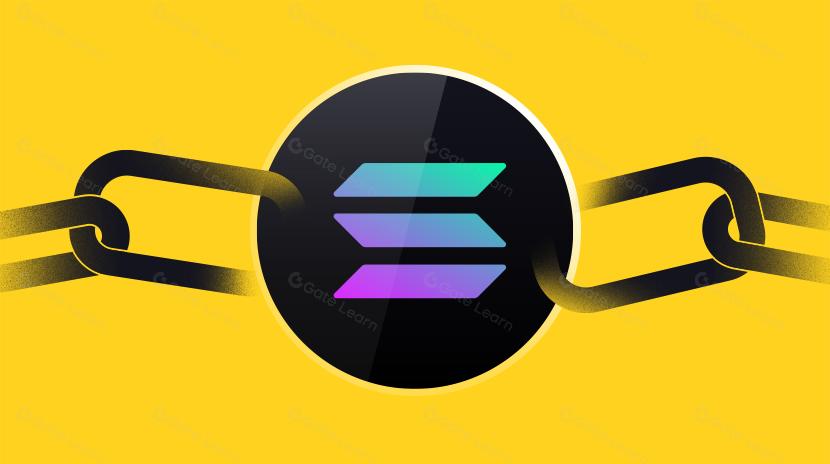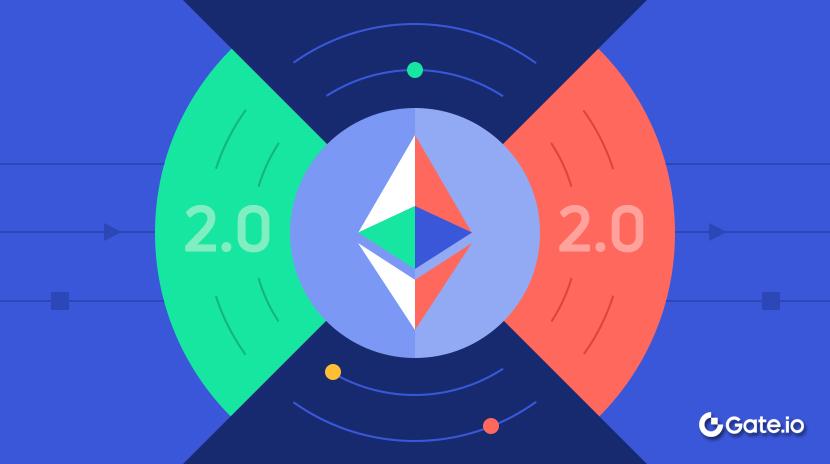From mAsset to xStocks: The ups and downs of US stock tokenization over the past five years
In July 2025, Robinhood announced that users could trade U.S. stocks on the Arbitrum chain 5×24 hours; Bybit and Kraken announced the launch of xStocks provided by the Swiss compliance asset tokenization platform Backed Finance; Coinbase even applied to the SEC to issue tokenized securities. The market was abuzz with discussions, and trading U.S. stocks on-chain became the focus of users’ attention.
Is this the first time that US stocks are on the blockchain?
Back in the summer of DeFi in 2020, the Mirror Protocol launched synthetic assets mAssets on the Terra chain, allowing users to “hold” U.S. stocks like Apple and Tesla without KYC or broker accounts. At that time, Mirror was full of ambition, but ultimately faded away with the collapse of Luna and the heavy-handed regulation from the SEC.
Five years later, new generation US stock tokenization products like xStocks are making a comeback. How do they differ from the Mirror of that year in terms of asset structure, compliance, technology stack, and more? This time, can US stock tokenization go further?
1. Asset Structure Comparison: Mapped from the Chain to Real Anchoring
The mAsset of Mirror Protocol is essentially an on-chain price synthetic asset. It does not represent any equity or asset ownership in the real world, but instead simulates a “price-pegged but asset-detached” synthetic target by synchronizing real U.S. stock prices through oracles using smart contracts. The issuance of mAssets relies on the over-collateralized algorithmic stablecoin UST. Once systemic risks appear in the underlying stability mechanism, such as the collapse of the Terra ecosystem in May 2022 (UST de-pegging), the entire asset system immediately falls into a chain reaction of value going to zero. The core issue of this architecture is that it anchors “price” rather than “rights” or “assets,” making it fundamentally closer to derivatives rather than ownership certificates.
In contrast, xStocks adopts a completely different asset anchoring structure. It is initiated by the Swiss compliance organization Backed Assets, with a clear underlying asset structure that is off-chain verifiable: real stocks are first purchased through brokerage firms such as Interactive Brokers, and then held by regulated custodians such as Clearstream, InCore Bank, and Maerki Baumann. The generation of tokens is done through a “buy first, then go on-chain” approach, ensuring that each xStock token corresponds to a real stock position, guaranteeing a 1:1 correspondence between each token and the actual holdings. In short, every on-chain purchase by users is backed by real stock transactions.
xStocks’ tokens are issued on the Solana public blockchain using the SPL standard, supporting 5×24 hours of on-chain trading and instant settlement, breaking the limitations of traditional securities markets constrained by weekdays and trading hours. More importantly, compared to the vulnerabilities exposed by DeFi synthetic asset systems like Mirror in extreme market conditions, xStocks’ asset structure incorporates real assets, compliant custody, and on-chain auditable mechanisms, freeing it from the fragility of DeFi synthetic assets that can shatter at a touch.
2. Compliance Logic Comparison: From Gray Areas to Compliance Focus
The birth of Mirror Protocol coincided with the explosive window of DeFi in 2020, a time when there was a regulatory vacuum in the on-chain ecosystem alongside a frenzy of experimentation. At that time, KYC/AML was not widespread; instead, there was a default mode of anonymous, uncensored, and borderless trading. Mirror was born during this period, allowing users to mint mAssets by collateralizing UST or LUNA without identity verification, enabling the free trading of US stock-mapped assets such as TSLA and AAPL, thus facilitating 24/7 trading of US stocks for users worldwide.
However, this model based on synthetic assets + algorithmic stablecoins lacks regulation and real assets, which also lays hidden dangers for the future. In 2022, with the collapse of LUNA/UST causing global shock, the SEC initiated charges against Mirror and Terraform Labs, clearly defining mAssets as “unregistered securities.” Since then, on-chain synthetic assets have faced a regulatory winter, and the Mirror model has become a typical example of an experimental failure, marking the end of the first generation path of Web3’s mapping to real-world finance.
Currently, the driving forces behind xStocks are TradFi+Web3 hybrids such as Kraken, Robinhood, and Backed Finance, which possess compliance resources and traditional financial backgrounds. Kraken complies with the EU MiFID II directive, and Backed Assets and Dinari have both obtained securities Token issuance licenses; trading requires KYC/AML verification, and the off-chain settlement process is traceable. In 2025, the new SEC Chairman Paul Atkins referred to tokenization as the “financial digital revolution,” and the policy direction has shifted from repression to guidance.
What is important to know is that xStocks is not an equity Token, but rather a bond-structured tracking asset, essentially closer to a transferable stablecoin + income certificate. This structure can bypass the high barriers of regulatory securities attributes, but it also results in a lack of voting rights and corporate governance rights, and involves a more complex dividend and distribution structure, which needs to be executed through intermediary entities (such as Kraken’s Bermuda subsidiary PDSL). In addition, while the bond model brings compliance advantages in terms of taxation and registration (such as no stamp duty and being non-nominal), it also puts xStocks at a distance from the narrative of “on-chain U.S. stock ownership,” with some users stating, “on-chain stock Tokens seem more like a castrated version of stocks created to avoid taxes.”
3. Technical Stack Comparison: Ecological Isolation vs Protocol Integration
Mirror Protocol is built on the Terra chain, and its ecosystem mainly relies on the internal loop of LUNA and UST. Although Terraswap and Anchor Protocol had relatively mature functions at that time, they were limited by a single ecosystem, making cross-chain collaboration difficult.
xStocks chooses to deploy on multi-chain high-performance public chains (such as Arbitrum, Solana, Base), possessing cross-chain asset circulation capabilities. xStocks’ Token can be used for lending and LP mining in Solana DeFi protocols, gradually approaching on-chain composability.
However, the trading experience of xStocks still suffers from insufficient liquidity. Currently, its on-chain liquidity is highly concentrated in a few underlying assets, such as TSLAx and SPYx, with a large number of asset pools having fewer than 20 trades, severe slippage, and a lack of liquidity support mechanisms. Furthermore, xStocks still lacks a deep integration mechanism similar to perp DEX on-chain, resulting in a noticeable gap in the overall trading experience compared to contracts and US stock CFD products on CEX, making it challenging to meet the demands of large-scale traffic migration or high-frequency trading in the short term.
- According to on-chain data from defioasis, on the first day of the product launch on June 30, 2025, the on-chain trading volume was $1.338 million, with 1,225 unique trading users and 2,510 transactions.
- On July 1, despite a significant increase in volume, the trading volume rose to $6.64 million, with 6,565 new independent trading users and the number of transactions surging to 17,879, but trading remained concentrated on a few assets.
- Trading is mainly concentrated in top assets such as TSLAx ($1.71 million), SPYx ($1.53 million), and CRCLx ($940,000), while the majority of other targets have very limited trading, with some asset pools even having zero liquidity, making it difficult to support effective matching.
4. Current Landscape of Tokenization in the U.S. Stock Market
- StableStocks: StableStocks is a CeDeFi company focused on the onchain stock ecosystem, dedicated to creating a complete closed loop for onchain stock. Its tokenization path relies on a self-built compliant brokerage system and asset mapping technology, providing users with the ability to invest directly in high-quality real-world stocks through stablecoins. Its core goal is to enable the holding, lending, trading, and derivative construction of traditional stock assets on-chain, facilitating cross-platform liquidity for the same type of onchain stock to enhance the depth and efficiency of on-chain assets. Its product structure supports users entering the U.S. stock market in the form of stablecoins, with plans to cover various targets, including blue-chip stocks, ETFs, and thematic assets in the future.
- xStocks: xStocks is currently the largest project in terms of on-chain trading volume for US stocks, accounting for nearly 90% of on-chain liquidity. Its compliance framework relies on the Swiss DLT law and a dual SPV (Special Purpose Vehicle) structure in Liechtenstein and Jersey, ensuring legal compliance on the issuance side. The xStocks Token is issued on the Solana public chain, adopting the SPL standard, and introduces the Chainlink price feed mechanism, achieving high-frequency synchronization of prices with the off-chain market.
- Robinhood: As a representative of traditional brokerage firms entering Web3, Robinhood focuses on a “compliance-first” and “ecosystem closed-loop” model. Its European operations are regulated by the Bank of Lithuania and have obtained MiFID II and MiCAR cryptocurrency asset licenses, qualifying it to issue securities tokens within the EU. Robinhood is currently deploying a stock tokenization prototype on the Arbitrum layer 2 network and plans to launch its proprietary L2 in the future to achieve a technical closed-loop under regulatory compliance.
- Coinbase: As a leading infrastructure provider in the U.S. market, Coinbase’s tokenization path is directly influenced by the pace of SEC policy advancements. Currently, Coinbase is awaiting regulatory exemptions to activate its licensed subsidiaries to carry out clearing, custody, compliance reporting, and other business processes, aiming to achieve native compliant issuance of U.S. stock assets on-chain. Coinbase’s tokenization module is deployed on its self-developed Base Layer 2 network, with the first batch expected to launch 50–100 U.S. stocks and ETFs, covering standard blue-chip stocks and some thematic assets, and will support dividend payouts and on-chain settlement.
In the context of the gradual implementation of the stablecoin legislation, the market’s attention to compliance and tokenization is extremely high. However, stock tokenization does not mean replacing traditional stock markets; the greatest value of stock tokenization lies in connecting and opening the door to the crypto world for traditional investors, while also providing crypto users with tools to anchor real-world assets. Just as the introduction of Bitcoin and Ethereum ETFs has made it possible for mainstream capital to enter the crypto market, stock tokenization is also expected to become an important channel for the next round of capital inflows.
Statement:
- This article is reprinted from [jelabs2024] The copyright belongs to the original author [jelabs2024] If you have any objections to the reprint, please contact Gate Learn TeamThe team will process it as quickly as possible according to the relevant procedures.
- Disclaimer: The views and opinions expressed in this article are solely those of the author and do not constitute any investment advice.
- Other language versions of the article are translated by the Gate Learn team, unless otherwise mentioned.GateUnder such circumstances, it is prohibited to copy, disseminate, or plagiarize the translated article.
Related Articles

The Future of Cross-Chain Bridges: Full-Chain Interoperability Becomes Inevitable, Liquidity Bridges Will Decline

Solana Need L2s And Appchains?

Sui: How are users leveraging its speed, security, & scalability?

Navigating the Zero Knowledge Landscape

What is Tronscan and How Can You Use it in 2025?
